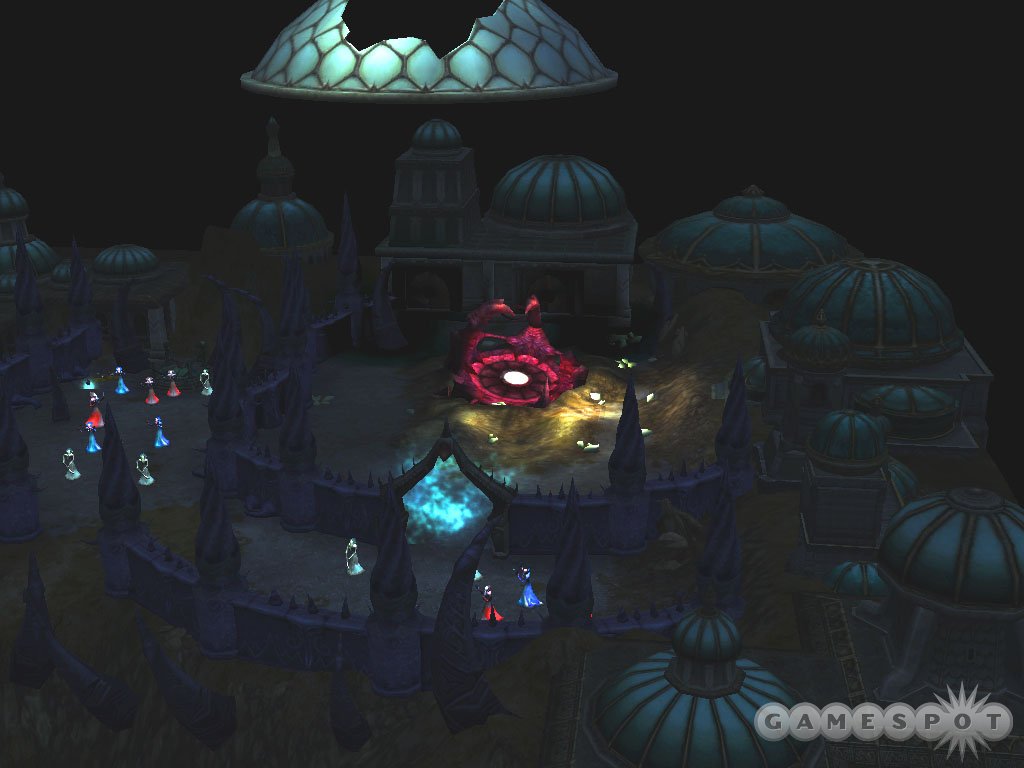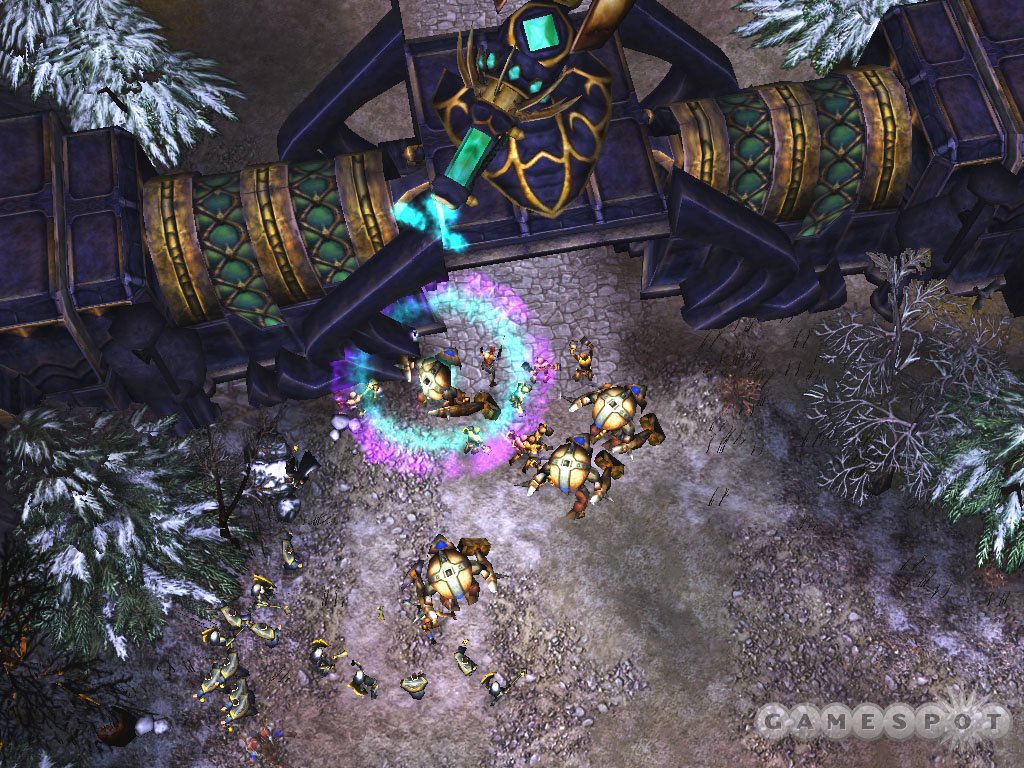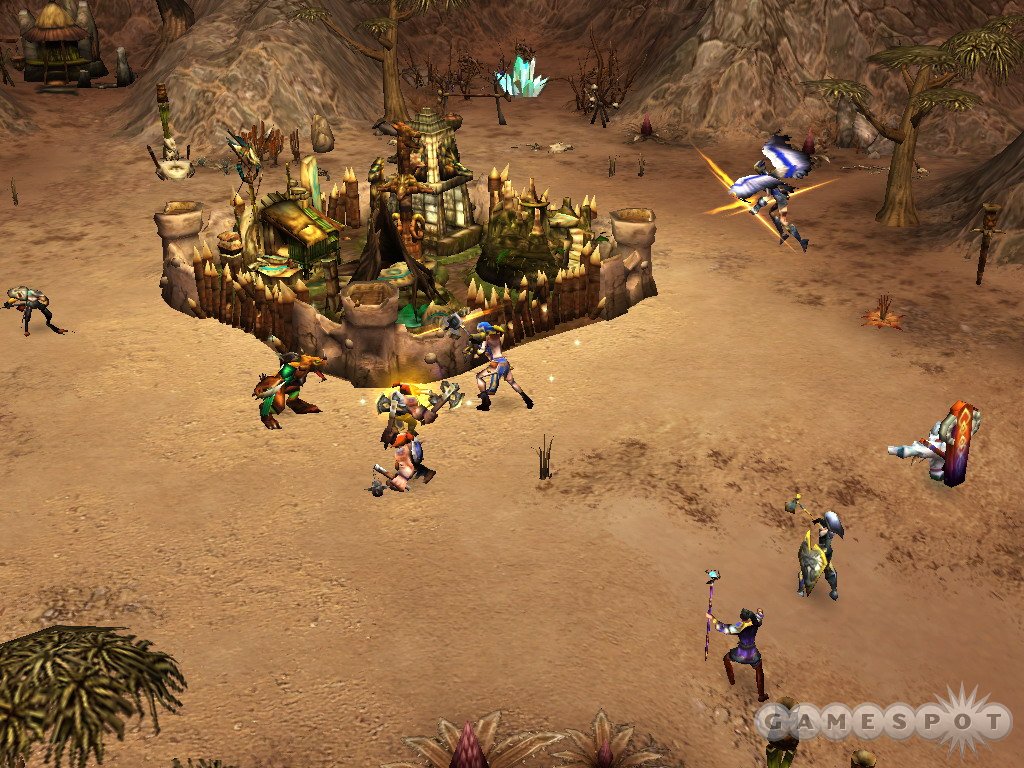Dragonshard Developer Diary #6 - Multiplayer
Designer Charley Price discusses the innovative new multiplayer modes, as well as the plans to support the game in the future.
Dragonshard is a game that will try to blend Dungeons & Dragons-style role-playing action with real-time strategy. In other words, in addition to being able to construct mighty cities, amass armies, and crush your enemy, you'll have the opportunity to plunder dungeons and underground cities, battle classic D&D monsters, and gain experience. It's a very ambitious mix, and we're certainly looking forward to the game, which is due out later this month, to see how it comes together. We're also very interested to see how the innovative new multiplayer modes work. We'll let designer Charley Price explain.

Multiplayer Dragonshard
Charley PriceDesigner, Liquid Entertainment
So far in this series of diaries, we have spoken in great detail about a number of high concepts and features in Dragonshard. Now, with the release mere days away, let's talk briefly about multiplayer and our plans at Liquid to support the game and our fan base after release.
By now, much has been said about what makes Dragonshard unique compared to other real-time strategy games. With the diversity of gameplay provided by the aboveground and belowground layers, along with dynamic real-time strategy and role-playing-style gameplay, there are plenty of features that set Dragonshard apart. Our goal was to apply this mentality to multiplayer and really craft an experience that will continue to challenge and entertain players for months and years to come.
In the single-player game of Dragonshard, there is a strong emphasis placed on exploring the environment and leveraging both the places of power and the artifacts you uncover to achieve victory in battle. Therefore, we have sought to apply similar gameplay techniques to multiplayer. This led us to a broad set of possible win conditions: raze, artifact, place of power, and control. Most of these win conditions (except for raze) can be toggled on or off before the start of a given multiplayer game. Depending on which settings are enabled, the key areas of the map change dramatically, leading to a diverse set of gameplay experiences per map and a similarly broad series of ways in which a player can win a given match.
The raze win condition refers to the tried-and-true way of dominating your opponent in a real-time strategy game. Simply wipe every trace of your enemy off the face of the map. If you destroy all of your enemy's buildings, victory is yours (again, this condition is enabled by default).
The artifact win condition provides a unique and interesting twist by placing artifacts, called seals of light, on random creatures in the underworld (the term "random" is used loosely--we have constraints to ensure there is a fair distribution). If players acquire one of these artifacts and carry it back to their base, they will receive a point. The first player or team to gain five points (the default value) wins the match. This dynamic places a much stronger emphasis on facing creatures in the underworld rather than just your opponent.

Sounds simple, right? Ah, but there is another twist. Upon acquiring a seal of light, the chosen unit is temporarily handicapped--its movement speed is moderately decreased, and it's unable to attack or use its abilities--and, most importantly, it reveals its line of sight around for all players. This mode places added emphasis on the underworld and encourages players to create fortified escorts for their artifact-bearing units and to have rapidly deployable shock parties to intercept their opponent's forces.
The place of power win condition demands that a given player or team control the majority of the places of power (structures that grant bonuses to the player who controls them) on the map for a given period of time. This puts an emphasis on diversified forces and "capture and hold" techniques, in addition to the strategic choice of which places of power to hold, given the bonuses that they grant. The control win condition benefits players who are adept at efficiently managing multiple exploration parties.
The control win condition demands that a given player or team control the majority of the expansion grids on the map for a given period of time. While this also puts an emphasis on "capture and hold" techniques, expansions are much easier to find and get to, though they are also much better fortified than places of power. Therefore, the control win condition benefits players who are quick to reinforce their troops, rely heavily on flying units, and/or prefer larger-scale skirmishes.
In addition to these modes, Dragonshard will be supported with a number of tools--both official and fan-created. In a patch soon after release, we will provide players with a set of new maps, in addition to the world-editor tool that we used to create all of our single- and multiplayer maps. This will provide industrious map designers with a robust set of features, ranging from the basic (terrain deformation, object placement, passability tools, and so on), to the advanced (trap placement and modification, monster spawn functionality, and so on). Our monster spawn system is especially worthy of note, as it will let the designer create a variety of diverse encounters, such as interrupting a war between bugbears and ettins, or a trap-ridden romp deep into the depths of an illithid citadel, rife with illusory creatures, respawning and/or randomized monsters, and fully customizable loot tables.

Furthermore, we have been very active in supporting the many fan sites that have sprouted up before and during our beta period, in addition to the tools that they have endeavored to create. One such tool, the Dragonshard Companion (currently set to be publicly released soon after Dragonshard's official release), takes the core statistics of all the units and their abilities and cross-references them, suggesting counters to unit types and in general providing an extremely thorough reference. We have worked directly with the creators of this tool and will continue to support it and any other fan-created sites and utilities that may continue to be created postrelease.
All in all, the feedback from the beta and the fans has been overwhelmingly positive. That said, we will continue to support and build upon Dragonshard well after release. This includes adding new maps, providing additional tool support, polishing balance issues that may arise, and anything else that will strengthen the game or the community surrounding it. Everyone at Liquid is immensely proud of Dragonshard, and we look forward to seeing it in gamers' hands everywhere in the near future.
Got a news tip or want to contact us directly? Email news@gamespot.com
Join the conversation